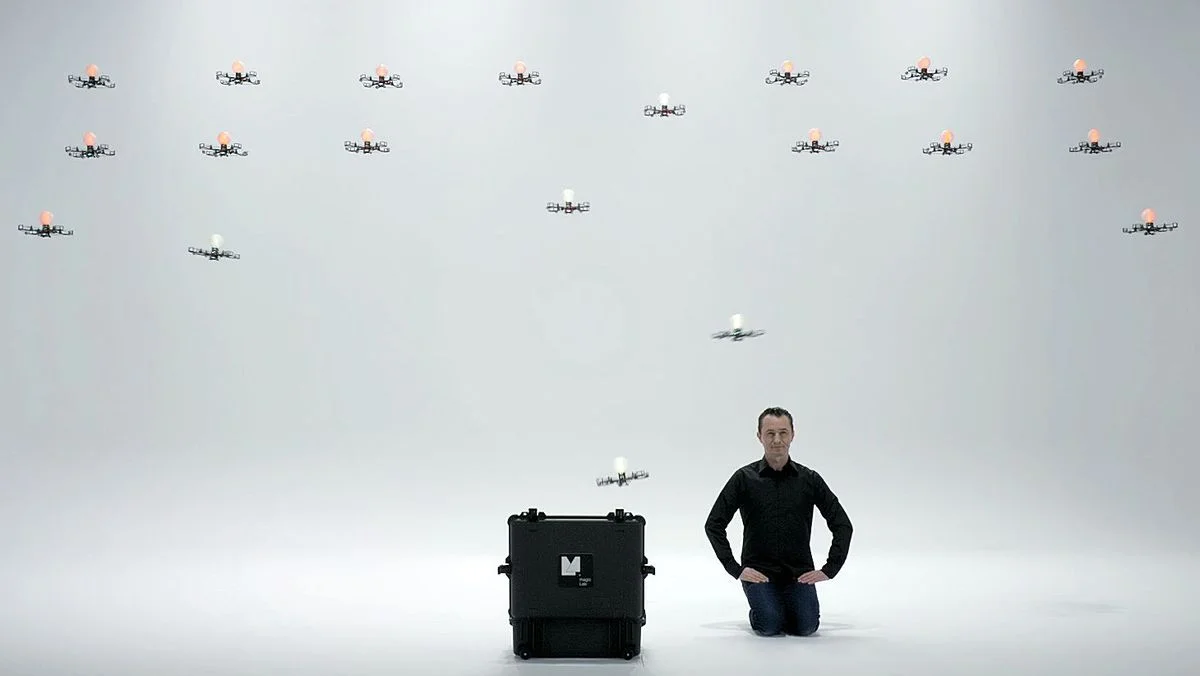Opto-Isolator
Opto-Isolator is an interactive art piece by Golan Levin that takes the idea that paintings are actually watching us in return and brings it to life in the modern world. The installation is comprised of a black box with a single robotic eyeball that is realistic in scale and design that interacts with visitors, reacting to their location and actions. Using cameras the eyeball responds in real time to its observers by following their eyes, blinking one second after every time the viewer does, and even turning away and getting shy if stared at for a prolonged period.
Creating art installations that explore interactions and our understanding of the levels of awareness that exist in the technology and machines we create, Levin explores these ideas questioning
“What if artworks could know how we were looking at them? And, given this knowledge, how might they respond to us?" Levin, Golan(2007,Dec)Opto-Isolator
The real time reactions from the machine coupled with the eerily human movement make for a surreal experience that allows the viewer to walk away thinking about the visual interactions that they have everyday with humans and machines alike.
Kit Eaton from Gizmodo wrote about the installation and the ideas explored through its unnerving movement stating
“We've all known moments when eye contact with someone either goes right or horribly wrong, shivers go down your spine, and results are either a make-out session or a thump. Who knows what ogling a robot feels like? “Eaton, Kit(2008, Feb 13)Opto-Isolator: An Arty Eye That Really Does Follow You Around the Room
The manner in which humans communicate are vast and range from verbal to physical and Opto-Isolator uses interactive robotics to explore the non verbal communication that occurs with eyes. The minor interactions that occur in people’s eyes when they communicate contribute a lot to the communication that comes across and greatly shapes interactions even if coupled with other forms of communication such as talking. For example when a person is watching something in the distance while you are talking to them, this is a signal to you that they are not paying full attention to the conversation. Or if a person looks down at their feet while speaking this can be perceived as fear or shyness. The robotic eyeball interacting with its viewers allows all other forms of communication to be limited with the interaction being only visually between the sculpture and the observers creating a more focused look into the visual interactions.
The project is double layered in the sense that not only is it useful in creating an experience that gets the viewers thinking about the human gaze and its uses in communication and interaction but it also explores and expands the use of this form of communication between man and machine. The robot is able to interact and communicate with the viewers using familiar psychosocial behaviors, which are what cause it to appear eager and interested when a new object is introduced into its view or turn and shy away if it is stared at for too long. This form of interaction between technology and humans is exciting as further possibilities of advanced human-machine communication are explored and implemented to further the human like relationship between people and robotics.
Golan Levin also explores vision and the gaze of eyes being used in interaction between machine and humans in his art piece Double-Taker (Snout) . Using similar mechanics as Opto-Isolator the installation creates an interaction between the robot and observers that gives the snout a personality as it reels back and reacts to the movement of those who walk in front of it. This project explores into the interactions of vision and robotics to create an interaction between the snout and people walking by that imitated curiosity and confusion. Designed to reel back and react in a manner that makes the people it reacts to look down as if maybe their shoe was untied. The confused and judgmental reactions from the snout takes the anthropomorphism of robotics and interactions with humans to a new place by making a project that has a machine that can make a human feel judged.
The ideas of how humans interact with machines and the ever evolving manner in which they can be programmed to react and have personality is also explored in 24 Drones by Rhizomatiks. 24 Drones is a project which sees highly programmed drones interacting with each other and humans in an innovative way. The poetic movement of the drones simultaneously showcases their incredible flight abilities as well as exploring the anthropomorphic possibilities that come with the new technological advancements. Although 24 Drones explores interaction through the physical space and Opto-Isolator looks at it through vision and gaze, both further explore how communication between machines and their users are being used for personification in machines. Whether robotics are getting better at spacial interaction or visual interaction, it seems a lot of artists and scholars are intrigued by the future of robotics and exploring the relationship and interactions humans will have with them in the years to come.
Other Links
http://www.flong.com/projects/optoisolator/
https://www.ted.com/talks/golan_levin_ted2009?language=en#t-753277





